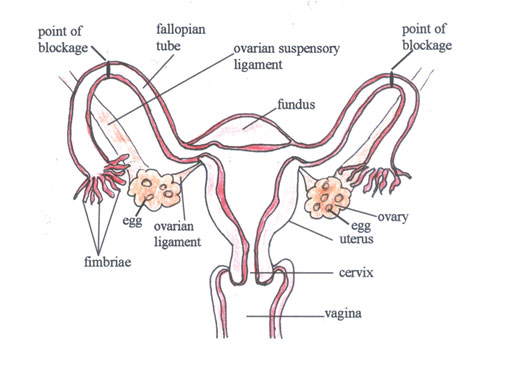9.4.1 Procedure
Tubal ligation (TL) is a surgical sterilisation technique for women, where the fallopian tubes are cut, or blocked with rings, bands or clips. This procedure closes the fallopian tubes, and stops the egg from travelling to the fallopian tubes where fertilisation takes place. It also prevents sperm from travelling up the fallopian tube to fertilise an egg (see Figure 9.3 for details). Sterilisation is effective immediately after the procedure. Tubal ligations are 99.5% effective as a birth control method.
When is it most appropriate for women to choose a permanent contraceptive method?
Female sterilisation is ideal for women who are certain that they wish to have no further children, and who need a reliable contraceptive method. It is also an appropriate choice for those for whom subsequent pregnancy may have an undesirable effect on their maternal or child health.
In Ethiopia, tubal ligation is a relatively simple outpatient procedure that has to be done in a hospital. It can be performed under local or general anaesthetic. Minilaparotomy, which involves making small incisions in the lower abdomen, is one of the techniques used in female sterilisation.
After surgery, it is recommended that women take two to three days off and only perform light activities for a week. Sexual activity can start again when a woman feels comfortable, usually after a week. With regard to future fertility, tubal ligation is considered a permanent method of birth control. Surgery to reverse a tubal ligation is not always effective. In addition, reversals are both difficult and expensive.
9.4 Female sterilisation

